Configuration and beautification after Ubuntu installation (1)
Configuration and beautification after Ubuntu installation (1)
Record it
The main interface after completion.

Configuration
1. The update source is Alibaba Cloud####
Find the Software and Update option, and the update source is the source of Alibaba Cloud.
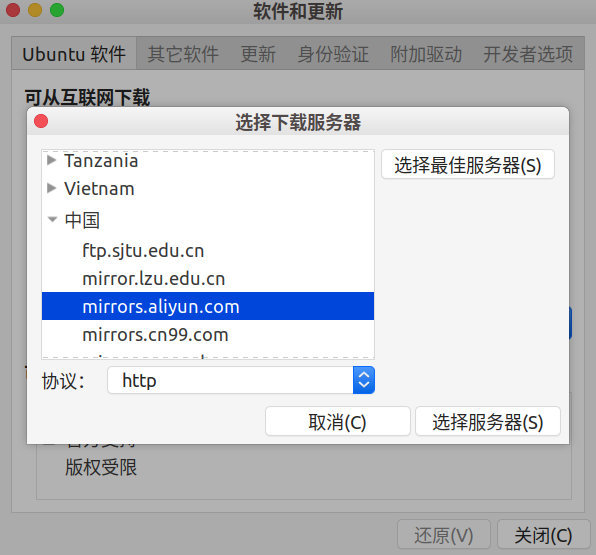
Check Canonical Partners in Other Software.
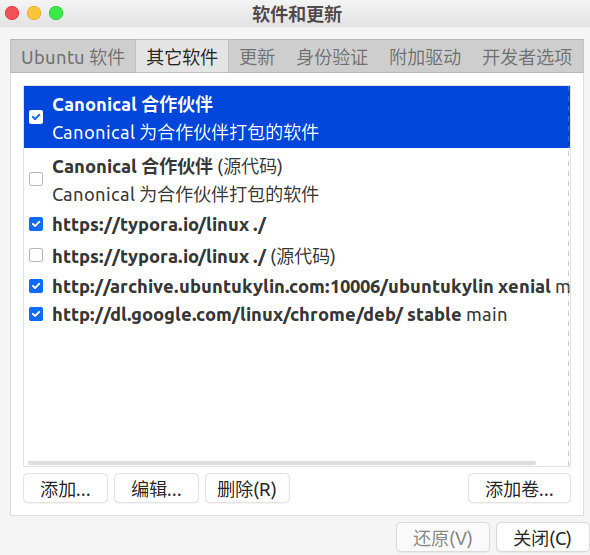
Then update it manually:
sudo apt update
sudo apt upgrade
2. Install Sogou Pinyin Input Method####
sudo apt-get install fcitx-bin #Install fcitx-bin
sudo apt-get update --fix-missing #If you install fcitx-bin failed, execute repair command
sudo apt-get install fcitx-bin #Execute after failure, reinstall fcitx-bin
sudo apt-get install fcitx-table #Install fcitx-table
Then download the 64-bit program in Sogou input method Linux official website, unzip and move to the current directory, execute the following commands:
sudo dpkg -i sogoupinyin*.deb #Install Sogou Pinyin
sudo apt-get install -f #If the installation fails, execute this command to repair
sudo dpkg -i sogoupinyin*.deb #Reinstall Sogou Pinyin
Then restart.
After restarting, we open Settings, select Region and Language, click Manage installed languages, change the keyboard input method system to fcitx, and then select Apply to the whole System.
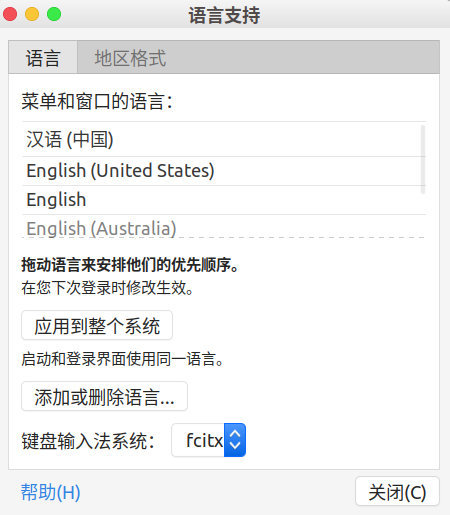
Then find Fcitx Configure in the application, and add Sogou Pinyin to the input method.
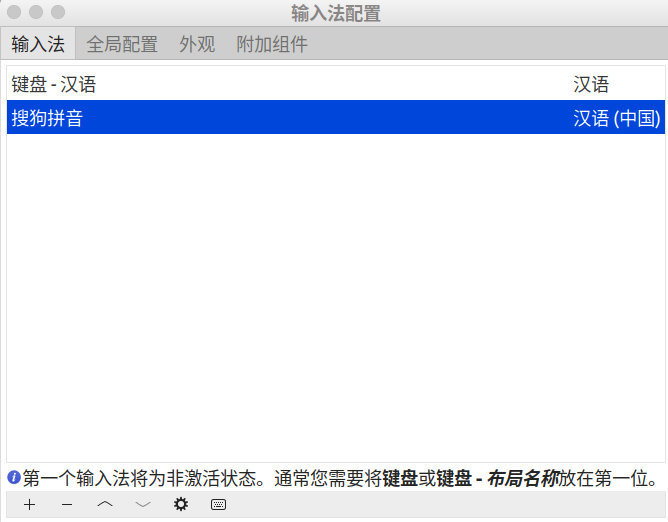
3. Install WPS
Although ubuntu also has its own office tool, I am not used to it personally, but WPS is more comfortable.
First uninstall the built-in LibreOffice
Enter the command in the terminal:
sudo apt-get purge libreoffice?
Don't miss the wildcard "?", otherwise all LibreOffice packages cannot be cleared/uninstalled.
Install WPS
Go to WPS_Linux official website and download the deb file.
Move to the directory where you downloaded the deb and execute
sudo dpkg -i wps*.deb
If an error is reported or the installation is not successful, we perform the following to perform repair and install
sudo apt-get install -f
sudo dpkg -i wps*.deb
At this point, wps has been installed successfully. Due to Linux copyright reasons, we need to install font files to use the installed WPS. Download wps font, decompress and move to the current directory for execution
sudo mkdir /usr/share/fonts/WPS-Fonts #Create a new wps font storage file
cd ~/Downloads #Enter the downloaded font directory
sudo apt-get install unzip #Install zip decompression software
sudo unzip wps_symbol_fonts.zip -d /usr/share/fonts/WPS-Fonts/ #Unzip the font to the specified folder
sudo mkfontscale #Generate font index
sudo mkfontdir #Generate font index
sudo fc-cache #Update font cache
4. Screenshot software Shutter
sudo apt-get install shutter
Or you can search for shutter installation directly in the ubuntu software market.
But after the installation is complete, I opened the shuter and found that the edit button was grayed out, because some packages were missing.
Download the following packages:
Perform the installation:
sudo dpkg -i libgoocanvas-common*.deb
sudo dpkg -i libgoocanvas3*.deb
sudo dpkg -i libgoo-canvas-perl*deb
If the installation fails, execute:
sudo apt-get install -f
5. Video and audio
Install VLC video player
sudo apt-get install vlc browser-plugin-vlc
Install NetEase Cloud Music
Click to enter NetEase Cloud Music Linux official website, click to download 64-bit deb.
There is a bug in NetEase Cloud Music, which cannot be opened by directly clicking the application icon. There are two solutions.
(1) Open directly using the command line, but there will be a terminal running in the background. Close the terminal and the process will end.
sudo netease-cloud-music
(2) Modify the shortcut of NetEase Cloud
sudo vim /usr/share/applications/netease-cloud-music.desktop
will
Exec=netease-cloud-music %U
To
Exec=netease-cloud-music --no-sandbox %U
Then restarted, but after restarting, I found that the second method sometimes doesn't work. Generally, I still use the first method to run commands directly in the terminal.
6. Install Chrome
wget -q -O - https://raw.githubusercontent.com/longhr/ubuntu1604hub/master/linux_signing_key.pub | sudo apt-key add
sudo sh -c 'echo "deb [ arch=amd64 ] http://dl.google.com/linux/chrome/deb/ stable main" >> /etc/apt/sources.list.d/google-chrome.list'
sudo apt-get update
sudo apt-get install google-chrome-stable
beautify###
I believe everyone is the same as me, thinking that the default theme of ubuntu is ugly, so the first thing many people install ubuntu is to change the theme for themselves, and I am no exception. I will explain the process of changing the theme below.
First install gome-tweak-tool
sudo apt-get install gnome-tweak-tool
After the installation is complete, find the optimization icon in the application, click on it to set your options.
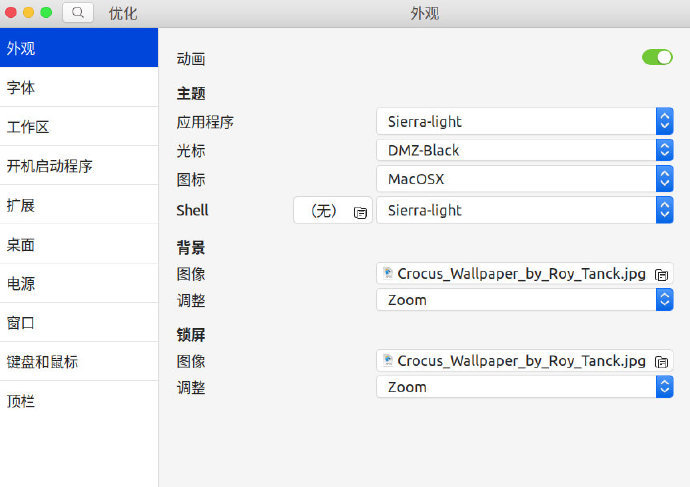
To modify the shell (and top and dock bars), we also need to install extensions
sudo apt-get install gnome-shell-extensions
After the installation is complete, there are more extensions in the gonme-tweak tool. We turn on the user themes option, and then we go to the browser to install the gnome plug-in,
Take chrome as an example, just download it directly from the app store.
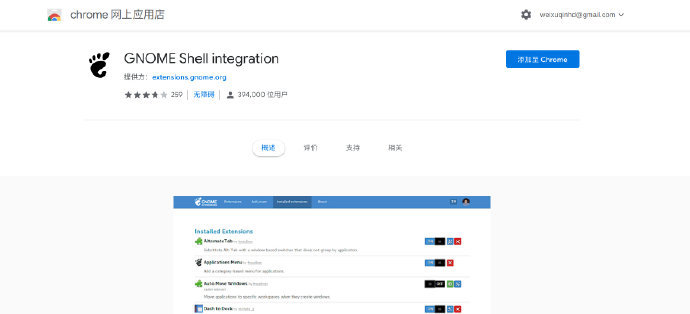
Local server support
sudo apt install chrome-gnome-shell
Then click on the extension and select dash to dock in the opened URL to download to the local.
We will unzip the downloaded deb file and copy it to .local/share/gnome-shell/extensions/:
sudo cp -r [email protected]/.local/share/gnome-shell/extensions/
Restart gnome, press alt + F2, and then enter r to restart.
Next, we can open dask to dock in the gnome-tweak tool and set it up.
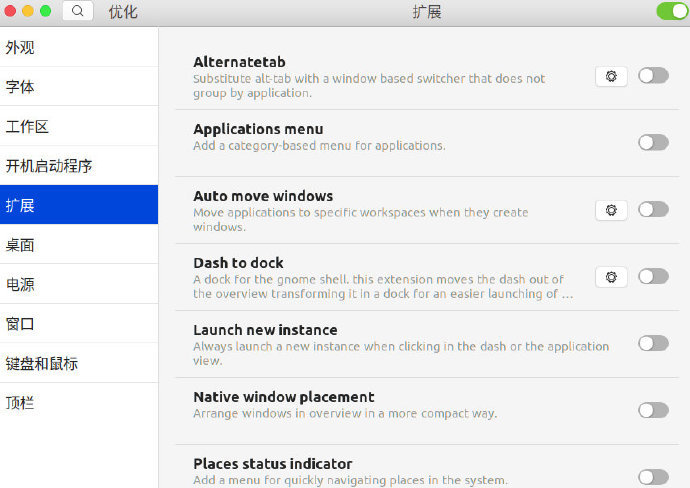

I am using a macOS-like theme here, and I personally think it's ok. Link: macOS High Sierra theme
After downloading and decompressing the theme and icon pack, copy them to a different directory:
- Subject: /usr/share/themes/
- Icon: /usr/share/icons/
Then select the corresponding theme and icon pack in gnome-tweak, and we have completed the configuration of the ubuntu theme!
So far, we have completed the basic configuration and beautification of ubuntu, the installation and configuration of related knowledge such as IDE and development tools, I will write the second article when I have time.
Recommended Posts